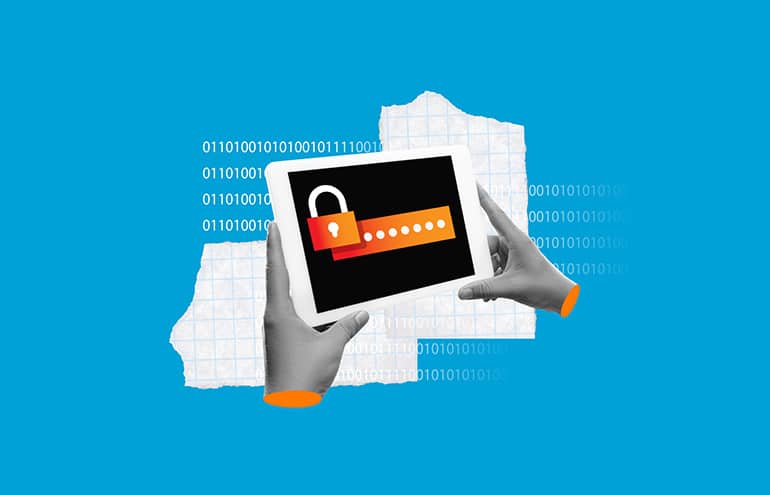Clients expect not only timely updates but also assurance that their sensitive information is handled confidentially. Secure collaboration tools can bridge the gap between efficiency and confidentiality, helping your law firm streamline interactions while safeguarding clients’ trust. Below are practical tips and tricks for upgrading your communications, leveraging the technology that is likely already available in your legal tech stacks.

1. Leverage Encrypted Email for Basic Communication
While email remains a staple of client communication, ensuring its security is paramount. Most modern email platforms, including Microsoft 365 and Google Workspace, offer built-in encryption features. Whether encryption is available depends in your license, but you can always upgrade your license.
In Outlook, when drafting an email, you’ll find encryption on the Options tab.


2. Utilize Client Portals for Document Sharing
Client portals are a secure way to share sensitive documents and updates. Most cloud-based practice management systems include built-in client portals that allow secure document uploads, shared calendars, and messaging.
The features available in your firm’s matter management system depend on which one you use—they tend to vary greatly from system to system.
Virtual meetings have become the norm, but not all videoconferencing tools offer the same level of security. Platforms like Zoom and Microsoft Teams provide advanced encryption and waiting room features to control participant access.
Always enable waiting rooms and require a passcode for every meeting. For an added layer of security, lock the meeting once all participants have joined.
4. Streamline Communications with Chat Platforms
Secure messaging platforms, such as Microsoft Teams or Slack, allow for real-time communication with clients and internal teams. These tools reduce the reliance on less secure channels like text messages.
Create dedicated channels for each client to keep communications organized and confidential. Make teams and channels private to ensure only authorized users can view sensitive discussions.
5. Implement E-Signature Solutions
Tools like DocuSign and Adobe Sign streamline the signing process while ensuring documents remain secure. Both platforms offer audit trails and encryption to protect client data.
Take it a step further and integrate your e-signature tool with your practice management or document management system to automatically store signed documents in the correct client file.
6. Train Your Team on Secure Practices
Technology can only do so much. It’s imperative that your team understands how to use collaboration tools safely and effectively.
Conduct quarterly security drills to reinforce protocols, such as identifying phishing attempts or managing sensitive client information.
7. Use Multifactor Authentication (MFA) Everywhere
Multifactor authentication adds an essential layer of security to your collaboration tools. Require MFA for all logins, especially for tools used for client communication or for storing client data.
Use an authenticator app like Microsoft Authenticator instead of SMS-based MFA for added security.
8. Encrypt Files Before Sharing
Even with secure platforms, an extra layer of encryption never hurts. You can password-protect Microsoft Office documents, allowing you to encrypt files with a password before sharing.
You must share the password for encrypted files through a separate communication channel for maximum security.
9. Audit and Monitor Communication Platforms
Regularly review who has access to your client communication tools. Immediately remove access for former employees or clients to prevent unauthorized use.
10. Emphasize Mobile Security
With the rise of remote work, mobile devices are often used for client communication. Ensure all devices accessing client information are secured with passcodes and encryption.
Outdated software can be a major vulnerability. Ensure all tools used for client communication and storing client data are updated to the latest versions to patch security flaws.
Enable automatic updates wherever possible and designate a team member or your IT professional to monitor and manage updates for critical systems.
12. Establish Clear Communication Protocols
Define how and when clients can expect updates, and ensure all team members adhere to these protocols. This consistency builds trust and reduces unnecessary back-and-forth.
If your practice management system has the capability, consider using automated workflows to send periodic case updates to clients without manual intervention.
13. Incorporate Secure File Request Features
Instead of relying on email for clients to send sensitive documents, use secure file request features available in platforms your practice management or document management system.
14. Enable Role-Based Permissions
Not every team member needs access to all client communications. Use role-based permissions to restrict access based on job function.
If available in your tech stack, set up permission templates in your tools to standardize access levels across the firm, reducing the risk of overexposure.
15. Provide Clients with Tech Support
Clients may not always be familiar with the tools you’re using. Offer simple guides or brief walkthroughs to ensure they can engage securely and effectively.
Record quick video tutorials using tools like Loom to demonstrate how to use client portals, sign documents, or join secure meetings.
About Affinity Consulting Group
Affinity Consulting Group inspires, enables, and empowers legal teams of all sizes to work smarter, from anywhere. The company’s holistic approach incorporates people, process, and technology. Affinity’s passionate, well-connected industry experts work hand in hand with you to help you better understand and optimize your business—from software to growth strategy, and everything in between.
©iStockphoto.com


Don’t miss out on our daily practice management tips. Subscribe to Attorney at Work’s free newsletter here >

